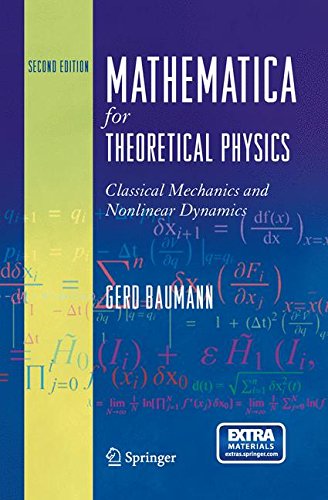

In addition to relying on absolute time, classical mechanics assumes Euclidean geometry for the structure of space. In pre-Einstein relativity (known as Galilean relativity), time is considered an absolute, i.e., the time interval that is observed to elapse between any given pair of events is the same for all observers. In cases where P is moving relative to O, r is defined as a function of t, time. In general, the point particle does not need to be stationary relative to O. A simple coordinate system might describe the position of a particle P with a vector notated by an arrow labeled r that points from the origin O to point P. The position of a point particle is defined in relation to a coordinate system centered on an arbitrary fixed reference point in space called the origin O. (that is, not electromagnetic or thermal) Main article: Kinematics The SI derived "mechanical" Non-relativistic mechanics also assumes that forces act instantaneously (see also Action at a distance). It assumes that matter and energy have definite, knowable attributes such as location in space and speed. The center of mass of a composite object behaves like a point particle.Ĭlassical mechanics uses common sense notions of how matter and forces exist and interact.

However, the results for point particles can be used to study such objects by treating them as composite objects, made of a large number of collectively acting point particles. (The physics of very small particles, such as the electron, is more accurately described by quantum mechanics.) Objects with non-zero size have more complicated behavior than hypothetical point particles, because of the additional degrees of freedom, e.g., a baseball can spin while it is moving.

In reality, the kind of objects that classical mechanics can describe always have a non-zero size. Each of these parameters is discussed in turn. The motion of a point particle is characterized by a small number of parameters: its position, mass, and the forces applied to it. For simplicity, it often models real-world objects as point particles (objects with negligible size). The following introduces the basic concepts of classical mechanics. The analysis of projectile motion is a part of classical mechanics. However, a number of modern sources do include relativistic mechanics in classical physics, which in their view represents classical mechanics in its most developed and accurate form. In cases where objects become extremely massive, general relativity becomes applicable.

To describe velocities that are not small compared to the speed of light, special relativity is needed. When the objects being examined have about the size of an atom diameter, it becomes necessary to introduce the other major sub-field of mechanics: quantum mechanics. They are, with some modification, also used in all areas of modern physics.Ĭlassical mechanics provides extremely accurate results when studying large objects that are not extremely massive and speeds not approaching the speed of light. These advances, made predominantly in the 18th and 19th centuries, extend substantially beyond earlier works, particularly through their use of analytical mechanics. Later, more abstract methods were developed, leading to the reformulations of classical mechanics known as Lagrangian mechanics and Hamiltonian mechanics. It consists of the physical concepts based on foundational works of Sir Isaac Newton, and the mathematical methods invented by Gottfried Wilhelm Leibniz, Joseph-Louis Lagrange, Leonhard Euler, and other contemporaries, in the 17th century to describe the motion of bodies under the influence of a system of forces. The earliest development of classical mechanics is often referred to as Newtonian mechanics. For objects governed by classical mechanics, if the present state is known, it is possible to predict how it will move in the future (determinism), and how it has moved in the past (reversibility). Diagram of orbital motion of a satellite around the Earth, showing perpendicular velocity and acceleration (force) vectors, represented through a classical interpretation.Ĭlassical mechanics is a physical theory describing the motion of macroscopic objects, from projectiles to parts of machinery, and astronomical objects, such as spacecraft, planets, stars, and galaxies.


 0 kommentar(er)
0 kommentar(er)
